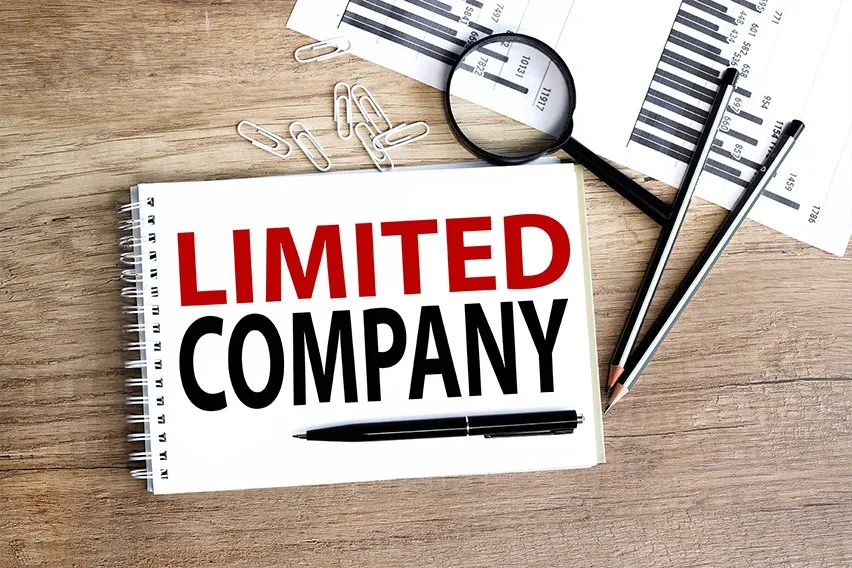WACC Formula, Calculations & Definition

The WACC formula isn’t just fun to say! It’s useful to businesses embarking on a new project and investors looking for new investment. It helps you work out the cost of a company’s capital, both equity and debt, in proportion to their percentage of overall capital.
This is often simply called the ‘cost of capital’. You need to know what it means, what the formula looks like, what it can tell you, and its limitations.
Here’s What We’ll Cover:
Why Is the Capital Structure Important?
What Does Weighted Average Cost of Capital Mean?
7 Steps to Calculating Your WACC
Example of Using the WACC Formula
What Does WACC Tell You as a Business Owner or Investor?
Why Is the Capital Structure Important?
The capital structure is important because the split between debt and equity affects the cost of the company’s financing. Your company might be only 20% funded by a loan and 80% by shareholders. Or any variation of these percentages.
Usually businesses have more debt because it’s that cheaper option, with lower financing costs and potential for tax relief on the interest. To work out a more accurate predicted cost, this is written as part of the WACC formula.
From another angle, it’s the minimum rate of return a company must make in order to pay its debtors and shareholders.

What Does Weighted Average Cost of Capital Mean?
Most companies use sources of capital to fund business running costs and growth. You can do this in two ways:
- Equity: selling shares on the stock exchange, including common stock and preferred shares
- Debt: commercial loans, interest-paying bonds, long-term debt
This combination of debt and equity makes up the business’s capital structure.
As we all know, any kind of capital comes with its own price tag. And each type of capital has a different cost. The Weighted Average Cost of Capital (WACC) is a predicted average of these finance costs. Each source of debt or equity is proportionately weighted according to the percentage of total capital it represents.
Knowing the cost of capital is an important factor when considering a new project within your business, or a new investment in another company. It’s an indicator of possible future profitability.
Value Creation
Using the WACC formula returns to the business basics of creating value. Or, more crudely, making money. As an investor, banks lend money and investors buy shares in your company in the hope of getting more money back in return. You then put this capital into your assets with the same hope – you make more money than you put in.
As an investor, you’ll have a minimum acceptable rate of return – or ‘hurdle rate’ – that you want to get from your investment. As a business owner, you’ll have the same expectation for every new project. The WACC is often used as this measure during the decision making process. Trying to answer the question, ‘Is this a good investment?’.
Mathematical WACC Formula
Brace yourself, here comes the maths bit…
The mathematical WACC formula is:
WACC = ((E/V) X Re) + ((D/V) X Rd X (1 – Tc))
Where:
- E = Market value of company’s equity
- D = Market value of company’s debt
- V = Total market value of company (E + D)
- Re = Cost of equity
- Rd = Cost of Debt
- Tc = Tax rate
You work out your WACC from the information on your quarterly financial statements. Basically, you multiply the cost of each element of your capital by its proportional rate, then multiply that by your Corporation Tax rate. This gives your weighted average cost of capital number.
This is a fairly comprehensive calculation, as it includes all sources of debt and equity to make up an average overall cost of capital projection. But it’s important to note that accruals and accounts payable aren’t part of the WACC formula. This is because these income streams aren’t from either investors or creditors, so they don’t fit into the aim of the formula.
7 Steps to Calculating Your WACC
- Divide the market value of your company’s equity by its total market value – this gives you the proportion of equity-based financing
- Multiply that by the Cost of Equity – this is figure 1
- Divide the market value of the company’s debt by its total market value – this gives you the proportion of debt-based financing
- Multiply that by the Cost of Debt – this is figure 2
- Deduct your corporate tax rate from 1 – this is figure 3
- Multiply figure 2 by figure 3 – this is figure 4
- Add figure 1 to figure 4 = WACC
Example of Using the WACC Formula
Imagine you’re starting a company. You’ve got a bank loan for £3,000 with an interest rate of 6.5%. You put in £9,000 of your own money as equity and your expected rate of return is 12%. The total value of the company is £12,000. The tax rate is 19%. So you’ve got all the components you need to work out your WACC.
- E = Market value of company’s equity = £9,000
- D = Market value of company’s debt = £3,000
- V = Total market value of company (E + D) = £12,000
- Re = Cost of equity = 12%
- Rd = Cost of Debt = 6.5%
- Tc = Tax rate = 19%
WACC = ((E/V) X Re) + ((D/V) X Rd X (1 – Tc))
WACC = ((9,000/12,000) X 0.12) + ((3,000/12,000) X 0.65 X (1 – 0.19))
WACC = 0.09 + 0.13 = 0.22
Weighted Average Cost of Capital for this start-up is 22%.
What Is the Cost of Equity?
Working out your company’s cost of equity can be quite tricky. There’s not a set stock price like there is for your tax rate. It’s open to reach whatever heights investors are prepared to spend. But we still need that cost of equity figure.
Time to take a look at it from a slightly different perspective. Shareholders invest with the expectation of making a return. If this doesn’t materialise, then they’re likely to sell their shares and invest in a better prospect. As sales of your company’s shares increase, so your company’s overall value decreases. No one wants that. So the price of equity becomes how much your business needs to spend to secure a stable share price.
From your position as company owner, the expected return is the opportunity cost of this equity investment.
What Is the Cost of Debt?
The cost of debt is simpler to work out because it’s based on current market rates. Businesses pay the correct market rate on each type of interest bearing debt. And that’s the cost of debt (Rd) figure to be applied in the WACC formula.
If you get tax relief on the interest of your debt payments, the actual net cost of the debt can be less. You deduct the tax saving from the amount of interest paid. In an equation, this looks like Rd (1 – corporate tax rate). This gives you the after-tax cost of the debt figure.

What Does WACC Tell You as a Business Owner or Investor?
WACC is a useful financial metric to measure how much a company’s financing is costing them. Theoretically, if the WACC is high, the company is spending more on financing. This can mean less return for shareholders and less possibility of paying off the additional debt it may need to grow.
As an investor, the company in question will find it more difficult to create value and it becomes a less attractive proposition as an investment. The likelihood of getting a good return is lower.
As a business owner, you can apply the WACC formula to projects under consideration to see if they’re a worthwhile investment internally. The same mathematical rules apply. If it looks like the project will have a high finance cost, it may not be worthwhile.
Restrictions of WACC
WACC tells you the average rate of your company’s finance costs. As with any analysis tool, the WACC formula shouldn’t be used in isolation. And there are severe warnings over its reliability. The figures used are not consistently reliable, particularly between different companies. As you’ve read, working out the cost of equity is very open to interpretation. Consistency is definitely not guaranteed.
Actually working out the WACC isn’t always as easy as our simple example above. Consider the multiple streams of equity and debt of any large company. This complicates things just by volume alone. And that’s before you add in the opinion-led approach to making an evaluation.
RELATED ARTICLES

 How to Cancel a Direct Debit: Everything You Need To Know
How to Cancel a Direct Debit: Everything You Need To Know What Is Debt-to-Equity-Ratio & How to Calculate It?
What Is Debt-to-Equity-Ratio & How to Calculate It? What Is Per Diem? Everything You Need to Know
What Is Per Diem? Everything You Need to Know What Is a Limited Company and How to Set One Up in the UK
What Is a Limited Company and How to Set One Up in the UK Return on Capital Employed (ROCE): Definition and Calculation
Return on Capital Employed (ROCE): Definition and Calculation What Is Impairment in Accounting?
What Is Impairment in Accounting?